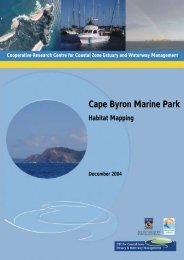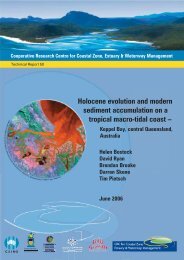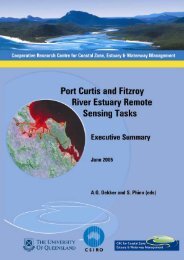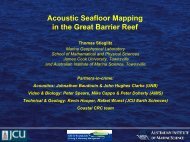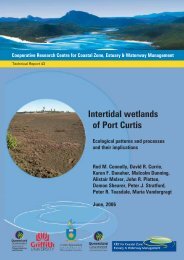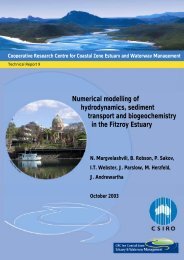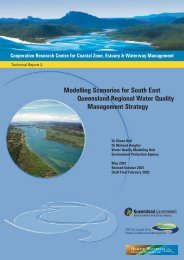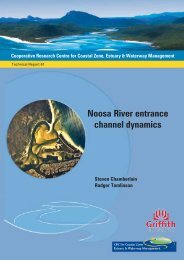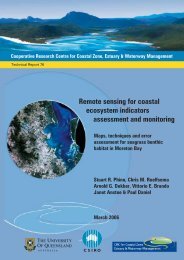The evolution of Jumpinpin Inlet - OzCoasts
The evolution of Jumpinpin Inlet - OzCoasts
The evolution of Jumpinpin Inlet - OzCoasts
Create successful ePaper yourself
Turn your PDF publications into a flip-book with our unique Google optimized e-Paper software.
<strong>The</strong> <strong>evolution</strong> <strong>of</strong> <strong>Jumpinpin</strong> <strong>Inlet</strong><br />
conditions at <strong>Jumpinpin</strong> normal and as such not fully recognised the potential impact<br />
<strong>of</strong> just the southern channel closing.<br />
If it is assumed that <strong>Jumpinpin</strong> and the seaway are interrelated, then redirection <strong>of</strong><br />
tidal prism toward the seaway due to the southern channel’s closure may be partially<br />
responsible for the large increase in flow rate at the seaway. However, recent aerial<br />
photographs show that the tidal channels leading into <strong>Jumpinpin</strong> are strong and<br />
appear to be carrying at least the same amount <strong>of</strong> flow as previously. Furthermore,<br />
widening <strong>of</strong> the northern channel at <strong>Jumpinpin</strong> during the period <strong>of</strong> closure shows that<br />
the majority <strong>of</strong> tidal flow was redirected north through this channel and not south to<br />
the seaway. This, and the fact that <strong>Jumpinpin</strong>’s main channel is the widest it has been<br />
over the last 50 years, leads to the conclusion that shoreline changes at <strong>Jumpinpin</strong><br />
are not significantly affecting the seaway. For this conclusion to be validated detailed<br />
numerical modelling <strong>of</strong> <strong>Jumpinpin</strong> is required.<br />
54





